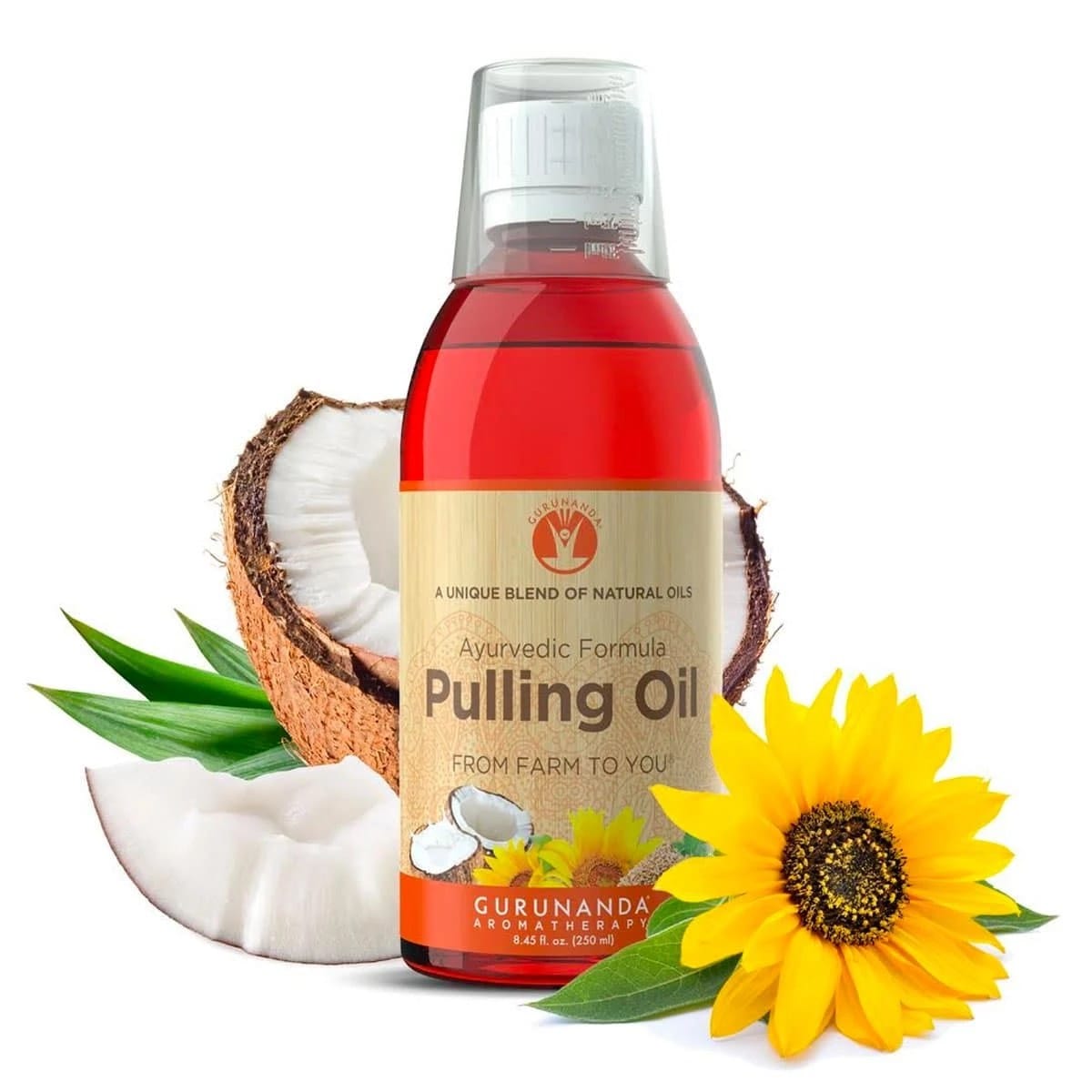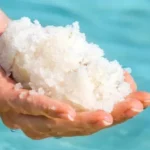Unlocking Ancient Ayurvedic Secrets for Modern Oral Health
Ready to take your oral care routine to the next level? Oil pulling, an ancient Ayurvedic practice, is experiencing a resurgence in popularity, with brands like GuruNanda leading the way. But does this ancient technique live up to the hype? We’re diving deep into the world of GuruNanda oil pulling, exploring its potential benefits, separating fact from fiction, and putting it to the test ourselves.
What is GuruNanda Oil Pulling?
GuruNanda specializes in oil pulling products, setting them apart from generic coconut oil recommendations. They offer a range of pulling oils, primarily formulated with cold-pressed coconut oil, celebrated for its purported antibacterial and antifungal properties.
Why GuruNanda?
- Unique Formulations: GuruNanda goes beyond basic coconut oil, offering blends infused with additional ingredients like mint for a refreshing experience or activated charcoal for those seeking extra whitening.
- Ayurvedic Expertise: The brand emphasizes its roots in Ayurveda, an ancient Indian system of holistic medicine that has placed importance on oil pulling for centuries.
- Product Line: GuruNanda provides a complete oil pulling experience, offering not just oils but also tongue scrapers and detailed instructions for optimal results.
The Claimed Benefits: Separating Hype from Reality
GuruNanda, like many proponents of oil pulling, highlights a range of potential benefits, often backed by anecdotal evidence and user testimonials. Let’s examine some of the most common claims:
1. Brighter Smile
- The Claim: GuruNanda suggests that oil pulling can help whiten teeth by removing surface stains.
- The Science: While coconut oil may have a mild cleansing effect, there’s limited scientific evidence to support its efficacy as a teeth-whitening agent. Some users report a subtle brightening, likely due to the removal of superficial stains, but don’t expect dramatic results.
2. Healthier Gums
- The Claim: Oil pulling is said to improve gum health by reducing harmful bacteria that can lead to gingivitis and other gum diseases.
- The Science: Some small studies, like one published in the Journal of Oral Health & Dental Management, suggest that oil pulling with coconut oil may reduce plaque and gingivitis. However, these studies often have limitations, and larger, more rigorous research is needed to confirm these findings.
3. Fresher Breath
- The Claim: GuruNanda posits that oil pulling can combat bad breath by neutralizing odor-causing bacteria in the mouth.
- The Science: This claim has some merit. Coconut oil’s lauric acid possesses antimicrobial properties, which could potentially help reduce the bacteria responsible for bad breath. However, oil pulling is unlikely to address the root cause of halitosis, especially if it stems from underlying medical conditions.
4. Detoxification
- The Claim: Rooted in Ayurvedic principles, oil pulling is often touted as a detoxifying practice, drawing toxins out of the body through the mouth.
- The Science: This claim lacks substantial scientific backing. While oil pulling might remove some bacteria from the mouth, there’s no scientific evidence to suggest it detoxifies the body as a whole.
How to Use GuruNanda Oil Pulling Oil
Ready to give GuruNanda oil pulling a try? Follow these steps for the best experience:
- Measure: Dispense one tablespoon of your chosen GuruNanda pulling oil.
- Swish: Gently swish the oil around your mouth for 15-20 minutes.
- Spit: Spit the oil into a trash can (never the sink!) to avoid clogging.
- Rinse: Thoroughly rinse your mouth with water to remove any remaining oil residue.
- Brush & Floss: Follow up with your regular brushing and flossing routine for optimal oral hygiene.
Pro Tips:
- Empty Stomach: Oil pull first thing in the morning before eating or drinking.
- Start Slow: If you’re new to oil pulling, begin with shorter sessions (5-10 minutes) and gradually increase the duration as you become more comfortable.
- Don’t Swallow: Avoid swallowing the oil, as it will be laden with bacteria and potentially harmful substances.
Addressing the Concerns: Is GuruNanda Oil Pulling Bad for Your Teeth?
While GuruNanda promotes the natural benefits of its oil pulling products, it’s essential to approach any health trend with a discerning eye.
Potential Risks & Considerations:
- Enamel Erosion: Some dentists express concern that the acidity of coconut oil, especially with prolonged use, could potentially erode tooth enamel.
- Not a Replacement for Traditional Oral Care: Oil pulling should never be considered a substitute for brushing, flossing, and regular dental checkups.
- Limited Scientific Evidence: While promising, the research on oil pulling is still in its early stages. Larger, long-term studies are needed to confirm its efficacy and safety definitively.
- Allergies: Individuals with coconut or other oil allergies should avoid oil pulling or opt for alternative oils.
The Dentist’s Verdict: What the Experts Say
Most dentists approach oil pulling with a degree of caution, primarily due to the lack of robust scientific evidence. They emphasize that traditional oral hygiene practices – brushing, flossing, and regular dental visits – remain the cornerstones of good oral health.
However, some dentists acknowledge that oil pulling might offer supplemental benefits for certain individuals when practiced correctly and alongside conventional oral care.
Important Note: It’s crucial to consult with your dentist before incorporating oil pulling into your routine, especially if you have any pre-existing dental conditions or concerns.
GuruNanda Oil Pulling: Our Honest Review
After testing GuruNanda oil pulling for several weeks, here are our honest observations:
- Fresh Breath: We noticed a significant improvement in breath freshness, particularly in the morning.
- Subtle Whitening: While not a dramatic transformation, our teeth did appear slightly brighter, likely due to the removal of superficial stains.
- Gum Health: We didn’t experience any adverse effects on our gums, but we also didn’t observe noticeable improvements.
- Overall Experience: The taste of GuruNanda’s flavored oils (like mint) made the experience more pleasant. However, we found the 15-20 minute swishing time to be a bit tedious.
The Bottom Line: Is GuruNanda Oil Pulling Right for You?
GuruNanda oil pulling, while rooted in ancient tradition, is not a magic bullet for oral health. While it might offer some benefits, especially for breath freshness, it’s essential to approach it with realistic expectations and prioritize traditional oral hygiene practices.
Key Takeaways:
- Consult Your Dentist: Always talk to your dentist before trying oil pulling, especially if you have any dental concerns.
- Don’t Ditch Your Toothbrush: Oil pulling cannot replace brushing, flossing, and regular dental checkups.
- Moderate Expectations: While some users report positive results, scientific evidence to support all claimed benefits is limited.
- Listen to Your Body: If you experience any discomfort or adverse reactions, discontinue use and consult a healthcare professional.
Would you like to learn more about the noble gas below krypton on the periodic table? Click here to find out!
Visit this page to find out more about the plants used in early genetics experiments nyt.
- Discover Long Black Pepper: Flavor & Health Benefits - April 25, 2025
- Shocking Twists: The Grownup Review: Unreliable Narration - April 25, 2025
- A Quiet Place Book vs Movie: A Deep Dive - April 25, 2025

















1 thought on “Gurunanda Oil Pulling: Your Complete Guide to a Healthier Mouth and Brighter Smile”
Comments are closed.